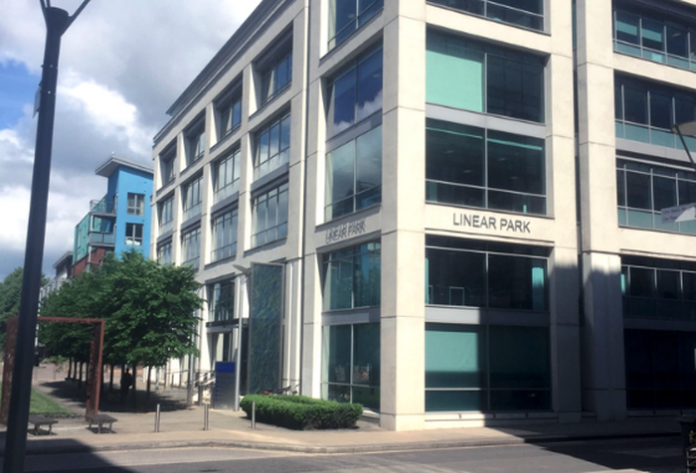
Morton Property Consultants has released its latest overview of the Bristol office market:
Let’s begin with the statistics: take up in Q1 was 58,141 sq ft, reflecting nervousness nationally around Brexit, but recovered handsomely to 177,633 sq ft in Q2.
That brought the combined H1 total to 235,774sq ft: not far adrift from the ten-year annual average. With very little existing Grade A space now available (currently 15,200 sq ft, down 6% on this time last year) and second-hand space being squeezed, rents across the range remain firm, with grade A achieving £35.00 psf and B+ close behind. This puts Bristol only slightly behind Manchester amongst the regional markets.
In line with the rising demand for flexible space, three of the city centre’s biggest deals were for serviced offices – all in Q2:
- Clockwise Serviced Offices purchased 30,611 sq ft at the Generator Building;
- Spaces acquired 26,500 sq ft at Programme; and
- Landmark occupied 9,781 sq ft at 1, Temple Quay
ForrestBrown taking 23,207 sq ft at Templeback represented the other standout transaction of H1. Another noteworthy deal, following on from Channel 4’s decision to set up a base here, was Netflix’s decision to take 6,554 sq ft of refurbished space at St Stephens House.
As the first half came to a close, several deals were in solicitors’ hands, raising expectations for 2019 to prove another average year. The start of Q3, however, has seen a market-changing development with ramifications for occupiers looking ahead for space.
BT – currently scouting for eight regional hubs – agreed terms on Building A at Assembly, Temple Way: at 200,000 sq ft, this is Bristol’s biggest single deal since Lloyds came into the city in 1991.
This will provide space for up to 3,000 staff for the company, which is working closely on digital technology with the University of Bristol – who, themselves are now moving apace with their new campus adjacent to Temple Meads. BT currently employs around 900 people in their Marsh Street offices; and, when they move out, this would release another much-needed development site in the centre.
BT’s decision has fully vindicated AXA/Bell Hammer’s decision to develop speculatively, beating other shortlisted options because of the occupation time frame.
Just into Q3, insurance giant Aon signed a new 10-year lease on the 10,392 sq ft sixth floor of One Redcliff Street, relocating from Marsh Street. The 15-storey building – formerly known as the Robinson building – reaped the rewards of StandardAberdeen’s £17m remodeling in 2016, joining Hewlett Parkard’s move earlier in the year.
What’s in the pipeline?
A number of businesses with leases expiring in 2020 and 2021 had been looking at Assembly, and this will now focus attention on the handful of other developments under construction or confirmed speculative build, notably: The Distillery (93,087 sq ft due in Q2 2020); Halo at Finzel’s Reach (116,113 sq ft due in Qu 4 2021); Portwall Gate (33,767 sq ft due Qu2 2021); and CARGOWork at Wapping Wharf – providing 22,778 sq ft of quirky office space for the city’s raft of up and coming businesses.
In addition, 70,293 sq ft of space at 2 Trinity Quay is undergoing comprehensive refurbishment and is expected to provide the largest space to come to the market in Qu 4 2019. 22-24 Queen Sq has also recently been refurbished to Grade B+ standard and is quoting in excess of £35psf. Linear Park (16,644 sq ft) is next to be upgraded to Grade B+ with a new approach, reception and amenity block in the basement.
Supply also tightens in the second-hand market
Demand for space continues to be driven by indigenous media and creative businesses on the expansion trail, as well as professional services recognising that Bristol provides a gateway to the South West.
Bristol now has one of the lowest vacancy rate for Grade A offices amongst the UK’s “Big Six” regional cities, and this is set to continue as the sites under development will take several years to come to fruition.
In turn, this is putting pressure on the second-hand market, with very few options for occupiers looking for single floors of 15,000 sq ft: six months ago, half a dozen were available. This severely limits options for businesses to house between 100 – 150 people and many tenants are seeking to negotiate a short-term extension to their lease.
The strong demand for space continues despite the fact that many businesses are embracing agile working, which can typically reduce requirements by around 20%.
It is also bringing in yields on the few investment deals being done. Kings Orchard has set the tone: the 89,010 sq ft office building, let in its entirety to Bevan Brittan LLP and with eight years unexpired, has be acquired by London Investment firm CCLA on behalf of clients Local Authorities Mutual Investment Trust from Aviva for £35 million, representing a net initial yield of 5.15%. 4.75% is the current prime office yield in Bristol.
There is no question that Bristol has very much swung back to a landlord’s market – and will probably remain that way for a minimum for three to four years. The shortage of Grade A supply is also encouraging landlords to add amenities to Grade B buildings and upgrade them to B+, typically taking them from top 20s and into the 30s psf. The letting at 3, Temple Quay to Brunel Professionals saw £33psf being achieved: a new benchmark for Grade B+ in the city.
Out of town buoyant
The out-of-town market enjoyed a good run in H1: in the first quarter 95,864 sq ft was let, including 12,760 sq ft at 600 Aztec West to Elbit Systems at £23.00psf: a new benchmark for North Bristol. The biggest deal was 40,760 sq ft to St James Place at 2610 Aztec West.
There was a quieter second (35,342 sq ft) giving a total of 131,206 for first half but cautious confidence remains that the average annual take up will be achieved.
The record differential between Bristol’s two office markets is not leading to any significant transfer of businesses electing to move out of town – the two locations present two very different ways of working. And while several buildings are letting well (including Aztec 800) there is still a decent supply available in the popular 5,000 sq ft range – although anyone looking for 15,000 – 20,000 sq ft will find their options limited.




















